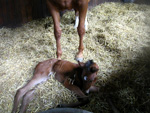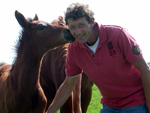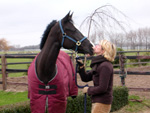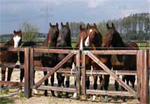History




Mario Wijnschenk,
owner of "Wijnschenk Stables", a horseman "pur-sang"!
At the age of 16 Mario spent his spare time at the famous Dutch KWPN Stallionshows, among the best Dutch breeders and horsedealers,
learn all about the young KWPN horses.
The best way to start!
At that time Mario became one of the youngest judges of the KWPN. Even in those early days Mario was already involved in breeding of Dutch Warmblood horses and the horse-trading business. Since 1981 Mario started his own studfarm and tradingstable.
Together with his wife, Mario has built a well known studfarm/ tradingstable with numerous external contacts in Holland and abroad. Their barn, situated in the North-West of the Netherlands, is very successful!
For many years "Wijnschenk Stables" are well known, because of their firstclass Dutch Warmblood horses.
Mario believes:
Succes is not accidental!
History Dutch Warmblood registry:
The Dutch Warmblood registry is known as the "Koninklijk Warmbloed Paardenstamboek Nederland" which is often abbreviated to KWPN, the translation is "Royal Studbook of the Netherlands".
Summary
The Royal Studbook of the Netherlands has a scrupulous breeding programme; the Dutch Warmblood horse is bred for performance along with desirable confirmation and strength.
If you are looking for a Horse for Sale for either Dressage or Show Jumping, Warmblood horses for sale are a very good choice.
Characteristics
The Dutch warmblood horse has no upper height limit. The Dutch warmblood can be bay, black, brown, grey or chestnut, sometimes roan and coloured. The confirmation of the Dutch warmblood will vary depending on the individual's bloodlines, but it is desirable for all Dutch warmblood horses to have correct confirmation, strength and good looks. Branding in the Netherlands is illegal so all Dutch warmblood horses are micro chipped.
History
At the end of the Second World War the horses where no longer needed for agricultural work as they had been replaced by motorised machinery such as tractors. Horses became an extravagance rather than a requirement. Since the 1950s continental horses, such as the German Holstein and Hanoverian, were imported to the Netherlands, to change the type of the Dutch horse. This was to meet the needs of the requirement to have a high quality recreational riding horse. The modern Dutch warmblood is still being developed to create a more specific type of horse that excels at showjumping and dressage.

